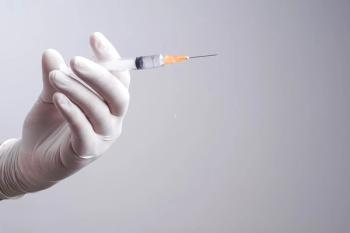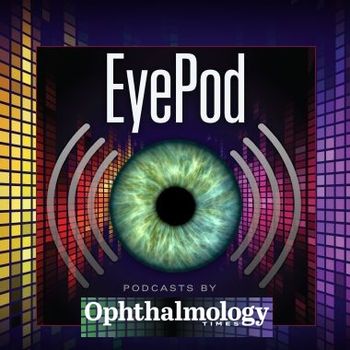
How pregnancy can affect Sjögren’s ectopic lymphoid structures
Research in an animal model has shown that pregnancy can increase accumulation and activation of cells and functions associated with ectopic lymphoid structures (ELS) in Sjögren’s syndrome.
Take-home message: Investigators have found that pregnancy in a rabbit model can interact with stochastic phenomena that contribute to the formation of ectopic lymphoid structures (ELS) in Sjögren’s syndrome. However, counter-regulatory phenomena were also found that prevent cells from coalescing into ELS. With better understanding of the counter-regulatory mechanisms, it may be possible to prevent ELS from developing or to reverse the process, thus reducing the risk of Sjögren’s syndrome developing.
Reviewed by Austin K. Mircheff, PhD
Los Angeles-Research in an animal model has shown that pregnancy can increase accumulation and activation of cells and functions associated with ectopic lymphoid structures (ELS) in Sjögren’s syndrome. Further research on the mechanisms involved in the development of ELS as well as the counter-regulatory mechanisms that may prevent cells from coalescing into these structures could eventually lead to interventions that might prevent the development of Sjögren’s syndrome, said Austin K. Mircheff, PhD, professor, Department of Physiology and Biophysics, Keck School of Medicine, University of Southern California, Los Angeles.
Related:
Dr. Mircheff and colleagues have begun to explore an approach that can not only describe what is happening during pregnancy that could cause Sjögren’s syndrome later in life, but it also could discern potential therapeutic targets, although the work is in very early stages.
“It’s not just a way of visualizing the precursors of a disease process but also seeing what the biological mechanisms and signaling interactions are between the various types of cells that have to organize themselves into rather complex structures and then interrupting the signals that are crucial to them finally coalescing,” said Dr. Mircheff.
Cells organizing and pregnancy
In earlier research, the researchers discovered a cluster of very strongly correlating transcripts in the lacrimal glands of rabbits. They mapped the transcripts conceptually or hypothetically to the different cell types that are likely to be producing them. The cells seemed to have organized themselves into a network resembling an ELS, Dr. Mircheff said, and many of the proteins the network transcripts specify are characteristic of Sjögren’s syndrome ELS. While all were present in normal glands in small amounts, the numbers varied, partly in relation to the climatic conditions under which the rabbits had been raised and partly in response to intrinsic, stochastic factors.
The team hypothesized that pregnancy might influence the development of the cellular network. They then conducted additional studies in which they tested six pregnant rabbits and six virgin rabbits using q-RT-PCR to determine the abundances of 62 transcripts in each lacrimal gland, and they used Pearson’s test to identify clusters of positively- and negatively-correlating transcripts.1
When comparing the abundances from the lacrimal glands of pregnant rabbits and virgin rabbits for all of the transcripts in the network, there were few statistically significant differences.
“But what was obvious was that there was a hugely bigger range of variation among the glands from the pregnant animals than the glands from the virgin animals,” Dr. Mircheff said. “Then when we looked at the data more closely, we saw that the individual glands from the pregnant animals sorted into two clusters, one where all of these transcripts were higher than normal and another cluster where they were all lower than normal.”
This dichotomy has been confirmed with principal component analysis.
Moving to Sjögren’s ELS
Cells that form the network-and that may eventually become a Sjögren’s ELS- are affected by pregnancy.
“They can either become more numerous and more highly activated or less numerous and less highly activated in pregnancy,” Dr. Mircheff said. “The obvious inference, which may not be correct, is that the glands in which it becomes more active or more prevalent are the ones that will go on to develop Sjögren’s because this network will continue developing of its own with time. Our working assumption is that eventually it develops to the point that it causes clinically significant symptoms.”
That simple scenario may not be completely accurate.
“At the same time, we find evidence for negative crosstalk between that network and cells or types of cells that express other proteins that are involved in ELS,” Dr. Mircheff said. “That may actually prevent all of the cells from coming together to form those structures, and it may be that in the glands where the first cluster is poorly developed, rather than the ones that are well developed, you may have reciprocal networks developing. It seems equally plausible that those glands could be the ones that go on to develop Sjögren’s.”
Preliminary data justify a study of what happens not only during pregnancy but over time after pregnancy and into middle and later years of life.
“The clinical significance is that if we can detect these networks of cells organizing themselves early, while they’re still precursors to the ELS, we may be able to find ways to intervene and prevent them from coalescing,” Dr. Mircheff said. “Essentially we might be able to prevent Sjögren’s from developing as soon as we get a very strong hint that all the precursors are there and poised to become pathological.”
Before an appropriate intervention could be applied, researchers would need to better understand the cells involved and the signals between them. Most of the transcripts measured to date have been for signaling molecules for cytokines and chemokines, but a broader array would have to be studied with advanced technologies for measuring mRNA or gene expression levels. Then, researchers would need to identify particular molecules that potentially could be targeted with small molecule drugs or with biologicals.
Related:
It may be significant that the study was performed in rabbits rather than mice, Dr. Mircheff said. While rodent models have played a role in significant findings in immunological studies, there are persistent questions on how closely immunological mechanisms in mice or rats correspond to those in humans.
“Histologically and in some functional aspects, rabbit lacrimal glands are more similar to humans. If we had done this study with rodents, we may not have seen anything like the results we’ve gotten,” Dr. Mircheff said.
1. Mircheff AK, Wang Y, Ding C, Warren DW, Schechter JE. Potentially pathogenic immune cells and networks in apparently healthy lacrimal cell glands. Ocul Surf. 2015 Jan;13(1):47-81.
Austin K. Mircheff, PhD
Email:
phone: (323) 442-1242
This article was adapted from Dr. Mircheff and colleagues’ poster presentation at the 2015 meeting of the Association for Research in Vision and Ophthalmology.
Newsletter
Don’t miss out—get Ophthalmology Times updates on the latest clinical advancements and expert interviews, straight to your inbox.













































